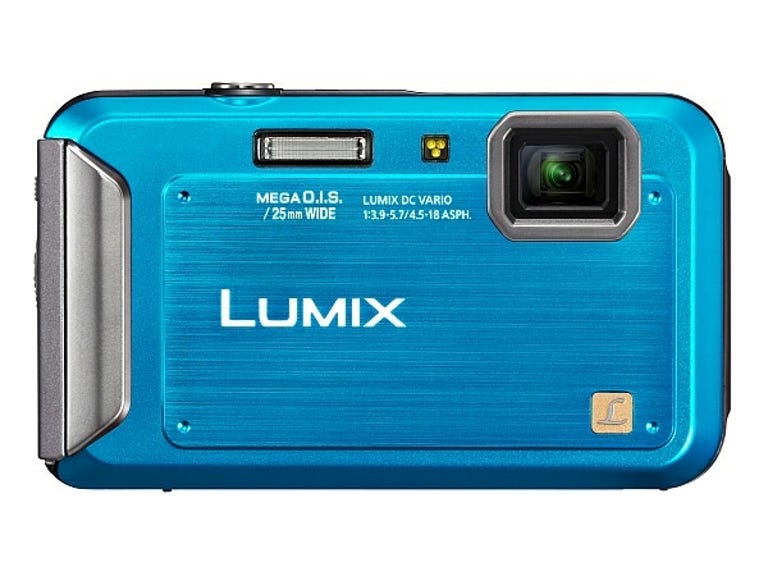 Why You Can Trust CNET
Why You Can Trust CNET Panasonic Lumix DMC-FT20 review: Panasonic Lumix DMC-FT20
While the FT20 is nothing to write home about, it's a perfectly serviceable tough camera that can easily slide into a pocket.
Design and features
The FT20 might not be as rugged, footloose and fancy-free as its big brother, the FT4, but it can still hold its own in tough conditions. First up, you'll notice how slim this camera is; at just under 2cm deep, it's perfectly sized for slipping discreetly into a pocket.
The Good
The Bad
The Bottom Line
Its svelte disposition belies the tough credentials, being waterproof to 5 metres, shock proof from 1.5 metres and freeze proof to -10 degrees Celsius. On the front panel of the camera, the lens element is exposed. It's a folding lens design, with all elements moving inside rather than protruding from the body.
At 25mm wide-angle, the lens will let you capture landscapes and reasonably panoramic vistas. With a maximum aperture range of f/3.9-5.7, it's not ideal for low-light photos without flash, but that's the price you pay for toughness. The optical zoom range is 4x, which is about average for a camera of this class. The 2.7-inch screen is nothing spectacular and neither is its low resolution, which makes viewing from different angles almost impossible.
Unfortunately, Panasonic has chosen to cram in a 16.1-megapixel CCD sensor rather, than stick to the lower ratings on its other tough and compact cameras. The 2.7-inch LCD also appears grainier than others, with a paltry resolution of just 230,000 dots. It's fine for a cheap knockabout camera, but we would liked to have seen a little more attention to detail here, given that it's the only way to compose and review images.
Buttons are all small and match the petite stature of the camera body. Simple power, shutter and record buttons grace the top panel. At the back, next to the screen, is a four-way directional pad with a zoom rocker, to complete the set. There's a double-locking door that protects the battery and SD card compartment. There's no HDMI output, just a single proprietary mini-USB port.
To keep things simple, shooting modes are just that: standard intelligent auto, plus some colour modes to add a little zest to images. Unfortunately, the Mode button — to switch between shooting options — was unresponsive on our unit, so we were only able to use standard auto mode.
Video recording is 720p or VGA quality only.
Performance
Image quality
While the FT20 fits the bill for a cheap and cheerful rugged camera, it does reasonably well on image quality, considering its price. Colours are rendered accurately, and while the camera does tend to blow out highlights, it is possible to trick the camera into metering for elsewhere in the frame and then re-composing.
The lens is sharpest at its centre, though there is considerable drop-off towards the edges. Image stabilisation is not particularly effective; we weren't able to even get a shake-free shot in a reasonably well-lit night area without flash.

Expect punchy and bright colours from the FT20, but at 100 per cent magnification (see inset) you are able to see artefacts as a result of over-processing. Still, for web display, the photos are perfectly acceptable.
(Credit: CBSi)
White balance is mostly accurate under both natural and artificial lighting. Again, it's nothing to write home about. High ISO sensitivities aren't great; not much of a surprise given that the camera exhibits grain and over-processing at the lower end of the spectrum, when looking at images at full magnification. Video quality is acceptable, if a little grainy as well.
Image samples
Exposure: 1/200, f/3.9, ISO 100 | Exposure: 1/160, f/3.9, ISO 100 |
Conclusion
While the FT20 is nothing to write home about, it's a perfectly serviceable tough camera that can easily slide into a pocket. As long as making enlargements or big prints isn't on your agenda, it will suit you just fine.


